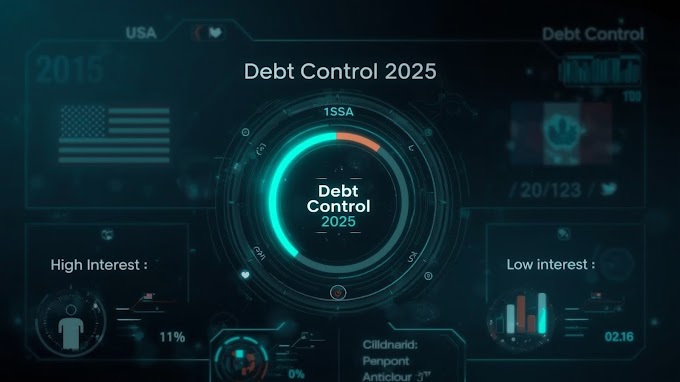Take Control of Your Debt in 2025
An interactive guide to strategically using personal loans for debt consolidation in the U.S., Canada, and France.
Why 2025 is a Pivotal Year
Economic conditions in major economies are creating unique windows to restructure debt. Select your country to see why now is the time to act.
🇺🇸 United States: The "Strategic Sweet Spot"
The U.S. economy offers a stable environment for proactive financial planning. Solid growth, slowly easing inflation, and cautious rate cuts create a favorable window to lock in a lower-rate consolidation loan before conditions change.
GDP Growth
2.1% - 2.5%
Fed Policy Rate (End of 2025)
~4.0%
Consumer Confidence
Strong
🇨🇦 Canada: The "Critical Relief Window"
For Canadians, 2025 is about relief. With the Bank of Canada expected to cut rates more aggressively than the U.S., it's a prime time to consolidate high-interest debts, freeing up cash flow, especially for households managing mortgage pressures.
GDP Growth
1.5% - 1.8%
BoC Policy Rate (End of 2025)
2.5% - 2.75%
Key Pressure
Mortgage Renewals
🇫🇷 France: The "Defensive Restructuring"
France's economic slowdown calls for a defensive strategy. With low inflation and sluggish growth, consolidating debt into a lower-cost loan is a smart move to reduce monthly expenses and build a financial buffer against uncertainty.
GDP Growth
~0.6%
Inflation (HICP)
~1.0%
Consumer Focus
Budget Optimization
What's the Gain? Calculate Your Savings
See the financial power of consolidation. Enter your total high-interest debt and select your country to visualize your potential savings over five years.
Your Potential 5-Year Savings
by choosing a personal loan over high-interest credit cards.
How Debt Consolidation Works
It's a straightforward strategy to simplify your finances and save money. Understand the core concepts and compare your options.
Get One New Loan
Apply for a single personal loan to cover the total amount of all your high-interest debts.
Pay Off Old Debts
Use the lump-sum from your new loan to pay off your credit cards and other debts in full.
Make One Payment
Instead of juggling multiple bills, you now have just one fixed monthly payment, making budgeting simple.
Compare Your Consolidation Tools
Personal Loan
Consolidate moderate to large debts with a predictable, fixed payment plan.
- ✔ Mostly Fixed Rate
- ✔ 1-7 Year Term
- ✔ Typically Unsecured
- ✖ Key Risk: Accumulating new credit card debt.
Balance Transfer Card
Best for small debts you can pay off within the 0% APR intro period (12-21 months).
- ✖ Variable Rate (after intro)
- ✖ Revolving Term
- ✔ Unsecured
- ✖ Key Risk: A high rate kicks in on the remaining balance.
Home Equity Loan (HELOC)
Access large amounts of capital at a low rate by leveraging your home's equity.
- ✖ Often Variable Rate
- ✔ Up to 30 Year Term
- ✖ Secured by Your Home
- ✖ Key Risk: Defaulting can lead to foreclosure.
Find Your Lender
The best place to find a loan depends on where you live. Explore top options for your country and credit profile.
Succeed After Consolidation
A loan is a tool, not a cure. Follow these steps to ensure your long-term financial health and build a strong future.
-
1
Create a New Budget
Make your new, single loan payment the cornerstone of a revised monthly budget that ensures you're living within your means.
-
2
Manage Old Accounts Wisely
Keep your oldest credit card account open (but unused) to preserve your credit history. Close newer accounts, especially those with annual fees.
-
3
Embrace Automation
Set up automatic payments for your new loan to guarantee you're never late. On-time payments are crucial for improving your credit score.
-
4
Commit to a Pay-Down Mentality
If your finances improve, make extra payments towards the principal. Most personal loans have no prepayment penalties, so you can become debt-free even faster.
.png)
.png)

.png)





Hi Please, Do not Spam in Comments